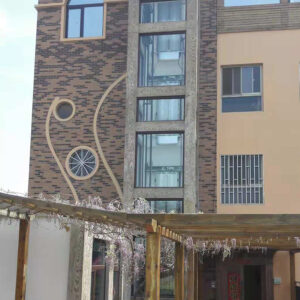Old elevators hold nostalgic charm, showcasing craftsmanship from bygone eras. However, they may become inefficient and outdated over time, prompting the need for renovation. Elevator modernization is essential to enhance safety, improve performance, and incorporate modern technology while maintaining the unique aesthetics of vintage elevators. In this article, we delve into the process and benefits of renovating old elevators, providing insights for customers interested in old elevator renovation.
Talaan ng mga Nilalaman
I-toggle1. Preservation of Historical Significance
One prime advantage of renovating old elevators is the preservation of their historical significance. Vintage elevators often possess intricate architectural details, such as ornate metalwork or hand-carved wooden panels, representing the craftsmanship of yesteryears. By refurbishing these elements while upgrading the elevator’s technical aspects, architects and designers can harmoniously blend the old-world charm with modern convenience, resulting in a distinctive and visually appealing elevator that captivates both nostalgia-seekers and technology enthusiasts.
2. Enhanced Safety and Reliability:
Renovating old elevators allows for the incorporation of advanced safety features, crucial for meeting modern safety standards. By integrating state-of-the-art technologies such as emergency communication systems, fire control mechanisms, and improved door sensors, the renovated elevators guarantee a heightened level of safety for passengers. Moreover, elevator modernization addresses issues like reliability and efficiency, ensuring smoother operations that minimize downtime and potential malfunctioning, thereby increasing passenger satisfaction.
3. Improved Energy Efficiency:
Old elevators often consume excessive energy due to outdated motor technology, resulting in higher utility costs for building owners. Renovating these aging machines presents an opportunity to harness energy-efficient features and components. By replacing outdated motor systems, implementing LED lighting, and adopting energy-saving drive technologies, renovated elevators can significantly reduce energy consumption, benefitting both the environment and the building’s economic sustainability.
4. Customization and Modern Amenities:
Old elevators can be renovated to match the requirements of their specific applications. Whether transforming them into exclusive showcases for luxury hotels or incorporating disability accessibility options for commercial buildings, elevators can be customized to serve various needs. Modern amenities such as touch-free controls, voice-activated systems, and smart destination dispatching enhance the user experience and cater to the expectations of contemporary passengers.
5. Seamless Integration with Building Infrastructure:
During the renovation process, old elevators can be seamlessly integrated with the existing building infrastructure. This means that property owners need not worry about structural alterations or major construction work, minimizing interruptions in day-to-day activities. Retrofitting old elevators ensures a smooth transition to modernization without compromising the building’s architectural integrity.
Renovating old elevators goes beyond restoring their functionality; it rekindles the charm of the past while embracing the conveniences of the present. From preserving historical significance to incorporating advanced safety features, energy efficiency, customization, and seamless integration, elevator modernization breathes new life into old machines. The renovation process enables these age-old elevators to leave an indelible impression on passengers, offering enhanced comfort, reliability, and efficiency. At the intersection of nostalgia and modernity, old elevator renovation unites the best of both worlds, beautifully blending past elegance with contemporary utility.


